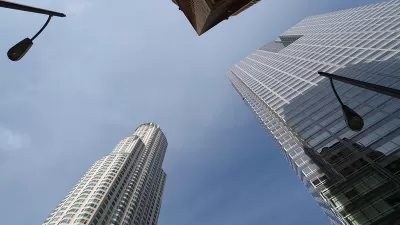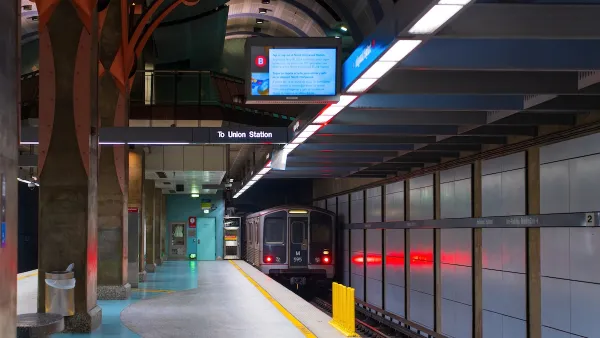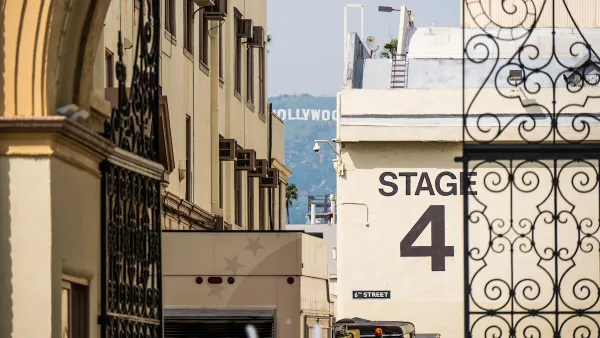When a glass slide installed 1,000 feet up the tallest skyscraper on the West Coast is more than it appears.

You might have already encountered footage of the Skyslide in Los Angeles being flown into place by a large helicopter, or of the first terrified human guinea pigs sliding down the glass connection between the 70th and 69th floors of the U.S. Bank Tower in Los Angeles.
L.A. Times Architecture Critic Christopher Hawthorne visited the new tourist attraction that opened on June 25 and was inspired to conjure up a term that is surely applicable to many places around the country: bouncy-house urbanism.
First, Hawthorne dispenses with the formality of describing the experiencing of sliding down a glass enclosure some 1,000 feet above the pavement below: "The ride won’t exactly be a threat to Six Flags. Nor would I say I’m in a hurry to try it again. But it was an architectural experience, however brief, of a kind I don’t think I’ve ever had."
The slide is the result of a $50 million renovation that includes an observation deck, two new lobbies, a café, a "transfer floor," and a restaurant and bar. Bus, as Hawthorne notes, much more powerful forces are at work than a simple renovation of a building built for a different era of business:
Though it was more than 80% leased when it opened in 1989, by the time OUE scooped it up for $367.5 million three years ago the building was barely half full. And its problems are not unique: As white-shoe law firms shrink and expanding tech companies in L.A. increasingly move into restored warehouses or historic buildings, commercial skyscrapers around the country are struggling to find tenants.
Enter "bouncy-house urbanism." As Hawthorne notes, the building's new owners are hardly the first "to see a possible revenue stream in the desire of adults to pay money to act like children in downtown settings."
FULL STORY: Ride the U.S. Bank Tower's glass Skyslide with 70 floors of nothingness below you

Planetizen Federal Action Tracker
A weekly monitor of how Trump’s orders and actions are impacting planners and planning in America.

Maui's Vacation Rental Debate Turns Ugly
Verbal attacks, misinformation campaigns and fistfights plague a high-stakes debate to convert thousands of vacation rentals into long-term housing.

San Francisco Suspends Traffic Calming Amidst Record Deaths
Citing “a challenging fiscal landscape,” the city will cease the program on the heels of 42 traffic deaths, including 24 pedestrians.

Defunct Pittsburgh Power Plant to Become Residential Tower
A decommissioned steam heat plant will be redeveloped into almost 100 affordable housing units.

Trump Prompts Restructuring of Transportation Research Board in “Unprecedented Overreach”
The TRB has eliminated more than half of its committees including those focused on climate, equity, and cities.

Amtrak Rolls Out New Orleans to Alabama “Mardi Gras” Train
The new service will operate morning and evening departures between Mobile and New Orleans.
Urban Design for Planners 1: Software Tools
This six-course series explores essential urban design concepts using open source software and equips planners with the tools they need to participate fully in the urban design process.
Planning for Universal Design
Learn the tools for implementing Universal Design in planning regulations.
Heyer Gruel & Associates PA
JM Goldson LLC
Custer County Colorado
City of Camden Redevelopment Agency
City of Astoria
Transportation Research & Education Center (TREC) at Portland State University
Jefferson Parish Government
Camden Redevelopment Agency
City of Claremont





























